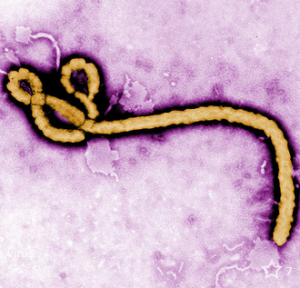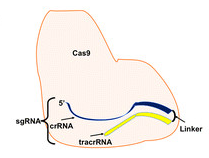

Love is in the air
Sand flies may be the carriers of deadly diseases such as Leishmaniasis, but they also have a romantic side. During mating, male sand flies of the Lutzomyia longipalpis species produce signals or a ‘love song’.
These songs vary between different species, and by detecting the different ‘song’ signals Vigoder and colleagues have been able to identify and differentiate between sand fly species in Brazil.
Microglia and neurodegenerative diseases

There is an increasing awareness that microglia may have a pathogenic role in neurodegenerative diseases. Using two widely studied microglia markers, CD68 and IBA1, Adam Bachstetter and colleagues have defined microglia morphologies in the aged brain, including some features that show evidence of disease specificity.
These findings may help guide future work connecting neuroinflammatory mechanisms with specific neurodegenerative disease subtypes.
Protein activated in response to stress
An interesting review by Jorrit Enserink highlights the exciting functions of the SUMO protein when cells are subject to various types of stress. The authors describe how the SUMO pathway components are activated in response to nutrient stress, viral infections and DNA damage.
Preparing for an epidemic: Ebola

With the threat of Ebola resurging in Liberia, and the world still in high alert, it is essential that we learn from these experiences, and prevent history repeating itself. Andreas Voss and colleagues surveyed 192 medical professionals around the globe to help develop an Ebola Infection Control Readiness Checklist.
While this checklist is geared towards the Ebola virus disease, the study provides a framework for improving global preparedness for other emerging pathogens.
CRISPR/Cas9 – when and where should it be used?

Targeted genome engineering has long been used by scientists to study gene function, mechanism and disease. CRISPR/Cas9 is one of the newest and hottest tools in the researcher’s arsenal, but when and where should it be used? Shui Qing Ye and colleagues review the history and development of this revolutionary tool and explore the numerous applications of CRISPR/Cas9 for advancing biomedical discoveries.
What came first, the chicken or the egg?

In their commentary, The Lamarckian chicken and the Darwinian egg, Yitzhak Pilpel and Oded Rechavi use the well-know ‘chicken and egg’ paradox as a gateway for discussing different processes of evolution.
The authors repurpose the ‘Egg first’ versus ‘The Chicken first’ debate by way of Darwinian and Lamarckian theories of evolution. They suggest that although in many ‘Darwinian’ speciation events the egg did indeed come first, in some cases, speciation could result from ‘Lamarckian’ mechanisms of epigenetic inheritance.
Investigating ciliopathies

The authors of an article in Cilia introduce two methods for the non-invasive acquisition of cells with primary cilia. They use urine samples and discarded milk teeth as alternatives for obtaining patient material from blood samples and skin biopsies.
The cells derived from these sources can be used for investigating ciliopathies, as well as other areas where primary cells are needed.
A renowned octogenarian’s point of view

A year ago, Ned Gilbert-Kawai found himself seated next to a renowned octogenarian academic. Entranced by the tête-à-tête which followed and the anecdotes he became privy to, he set out to record such conversations with eminent senior scientists and shares the first of these in a Question and Answer with John Wendell Severinghaus, published in Extreme Physiology & Medicine.
- Happy Easter! Enjoy the sound (and taste) of your chocolate! - 23rd March 2016
- Quiz: Aiming to make rare diseases common knowledge - 29th February 2016
- Quiz: The big end of year On Biology bumper quiz - 23rd December 2015
Comments